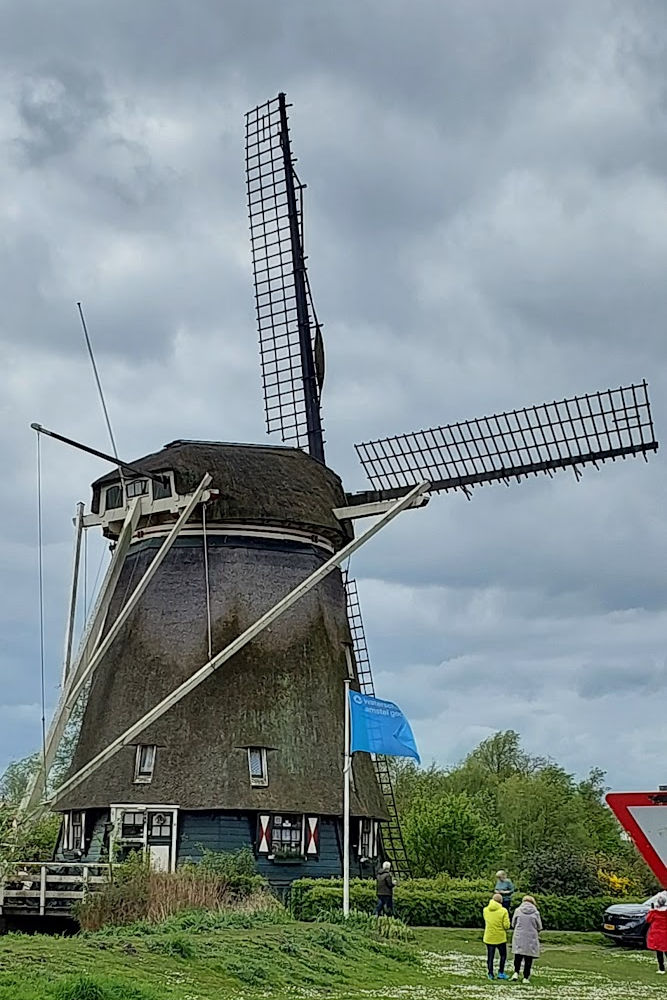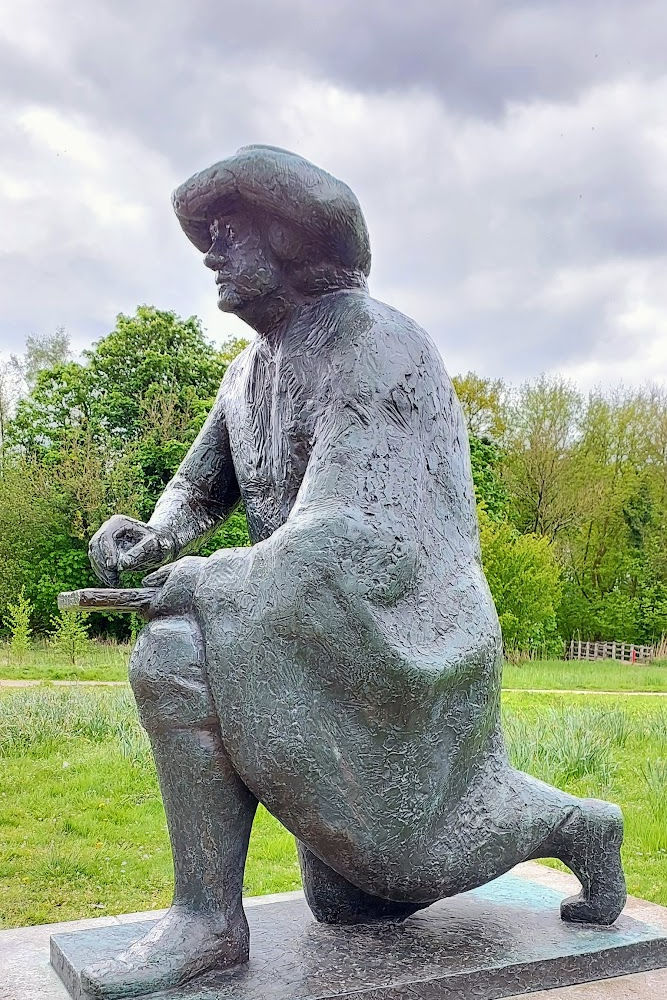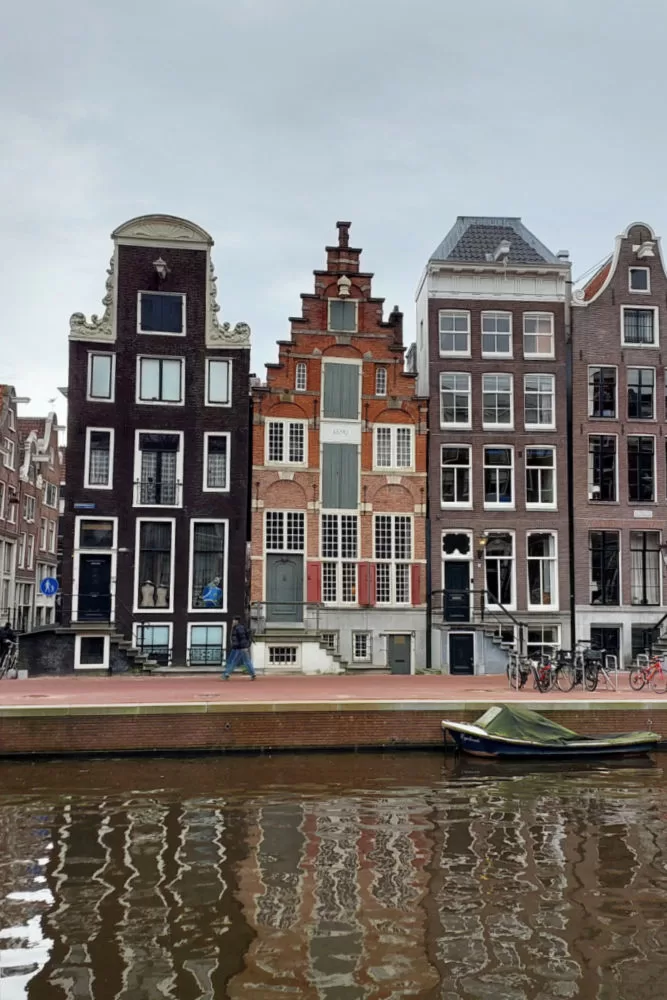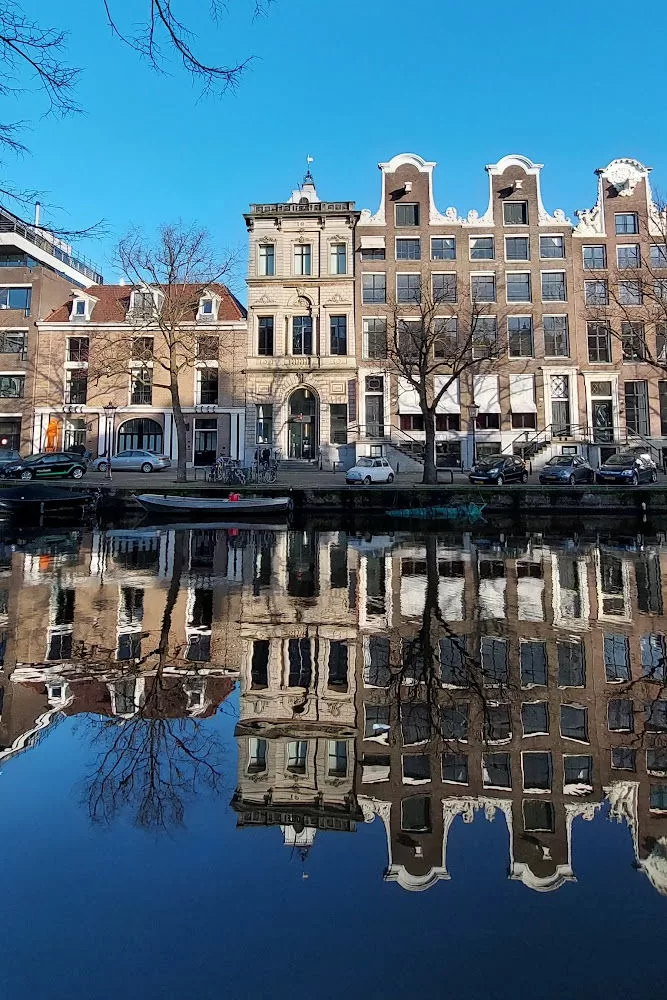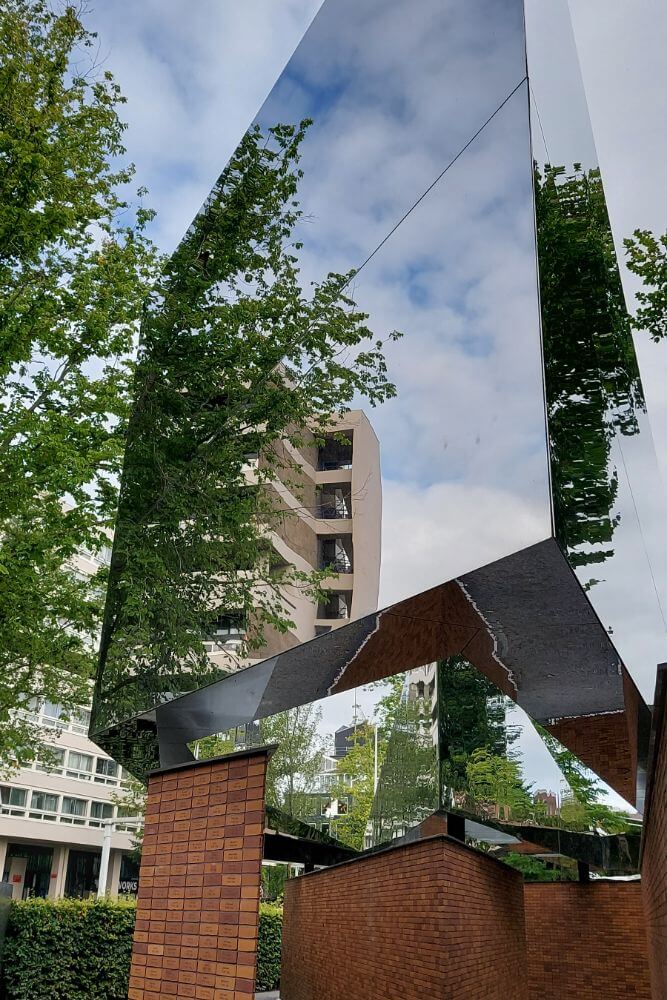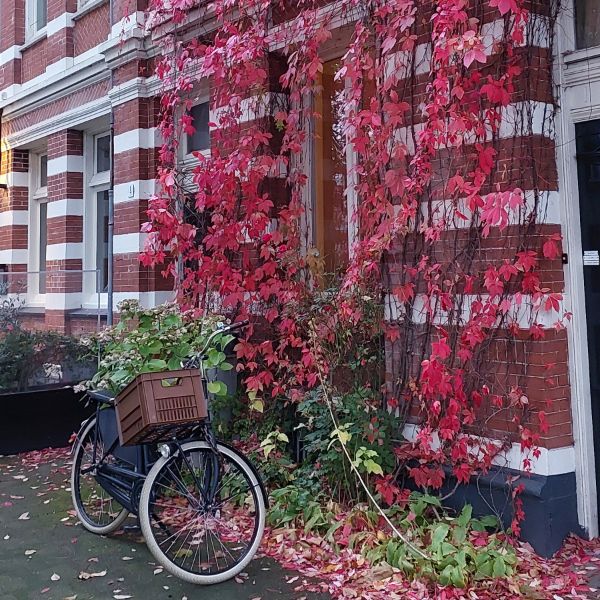This post shows you: Amstel River Walk – Best Amsterdam Hiking Route + Map

Looking for a scenic Amsterdam hike? The Amstel River Walk is a beautiful riverside trail that winds past historic bridges, canalside cafés, parks, and some of the city’s most elegant mansions.
This varied 19 km route blends nature, history, and local life. You’ll pass modern houseboats, peaceful parks, and even a cemetery where some of the Netherlands’ most notable figures rest.
Every section of the walk reveals a new side of Amsterdam.
Whether you’re into urban hiking, relaxing by the water, or discovering lesser-known corners of Amsterdam, this guide has everything you need to enjoy the Amstel Riverwalk from start to finish.
Amstel River Walk – A Scenic Hike Along Amsterdam’s Iconic Waterway
This walk starts at the Hermitage Museum, which is now called H’ART. The nearest metro stop is Waterlooplein (exit Hortusplantsoen). Alternatively, if you want to walk less, you can start your route at the Spaklerweg metro stop. It is a long loop that reaches just before Oude Kerk aan de Amstel. The return is along the other side of the Amstel until reaching the same starting point. This walk is almost 19 km long and lasts four and a half hours, including a stop at the cafe Thuis Aan de Amstel. Download the GPX or KML file from the map in “details.”How to get there?
How to Follow the Amstel River Walk
Download the Amstel River Walk map
1. H’ART museum (Hermitage)
We start at the H’ART museum (Hermitage). The museum has various exhibitions.
I had the opportunity to visit an exhibition about the origins of Amsterdam.
Seeing the old maps and the original plans to build the Amsterdam canals was interesting.
There are also paintings by great Dutch masters. As the museum takes a couple of hours to visit, I’d recommend visiting it on another occasion because this walk is long.
2. Amstelsluizen
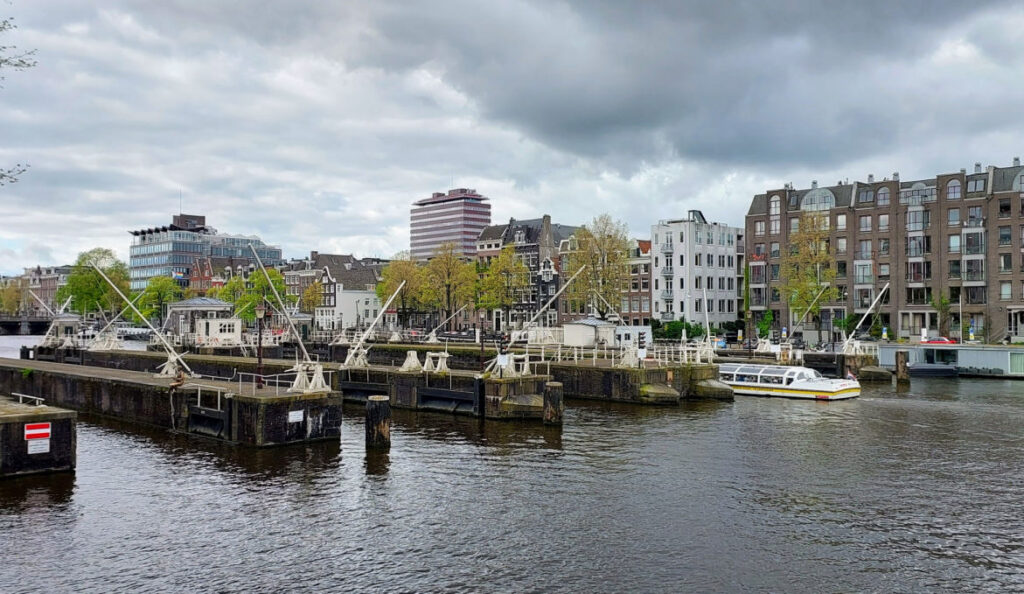
The Amstelsluizen are historic sluices located in Amsterdam.
Built in 1673, they were designed to regulate the water level in the Amstel River and protect the city from flooding.
They manage the water flow between the river and the canals, helping maintain stable water levels. These sluices are still used today!
3. Martin Luther King Park
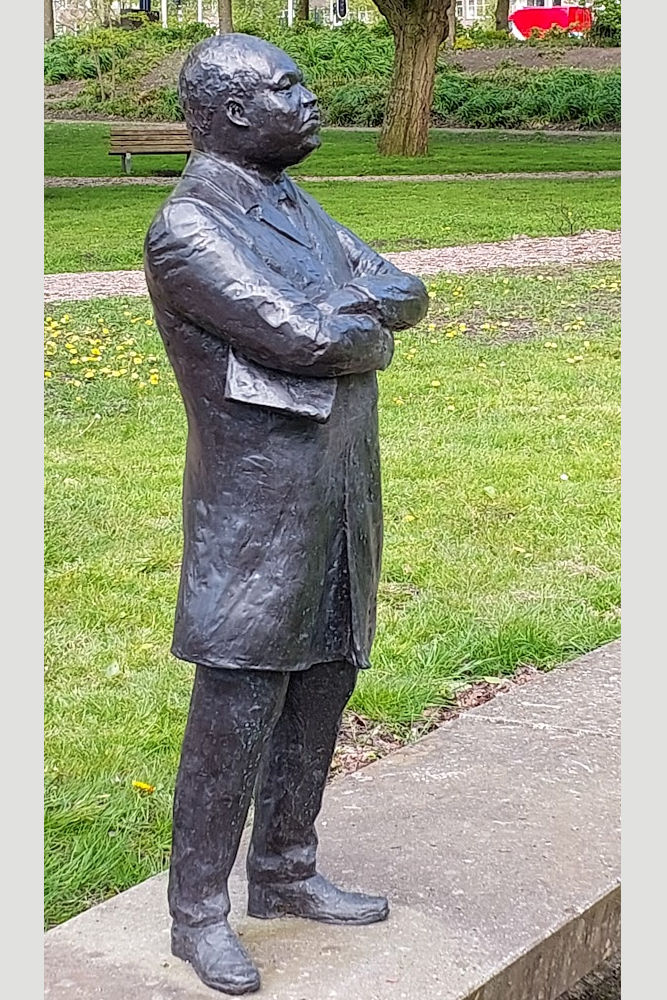
This beautiful park has a statue of Mr. Martin Luther King. Interestingly, someone placed the bronze statue without anybody knowing about it.
This is where people come to exercise and stroll with their dogs.
4. Zorgvlied Cemetery
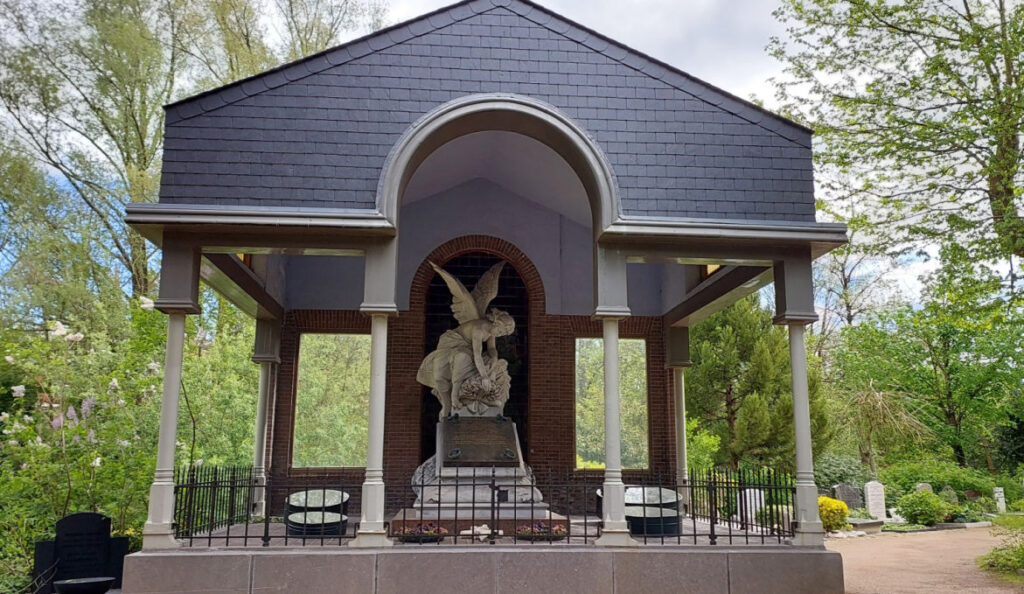
Finding such an elegant cemetery with such well-kept gardens was a surprise.
I read somewhere that they call it the Père Lachaise of Holland since, in the Parisian cemetery, well-known figures are also buried in elegant mausoleums surrounded by marble statues.
Zorgvliet cemetery is a tranquil and very well-kept place.
I was struck by the decoration of some tombs, such as that of the director of the circus Renz, with statues of elephants.
5. Amstelpark
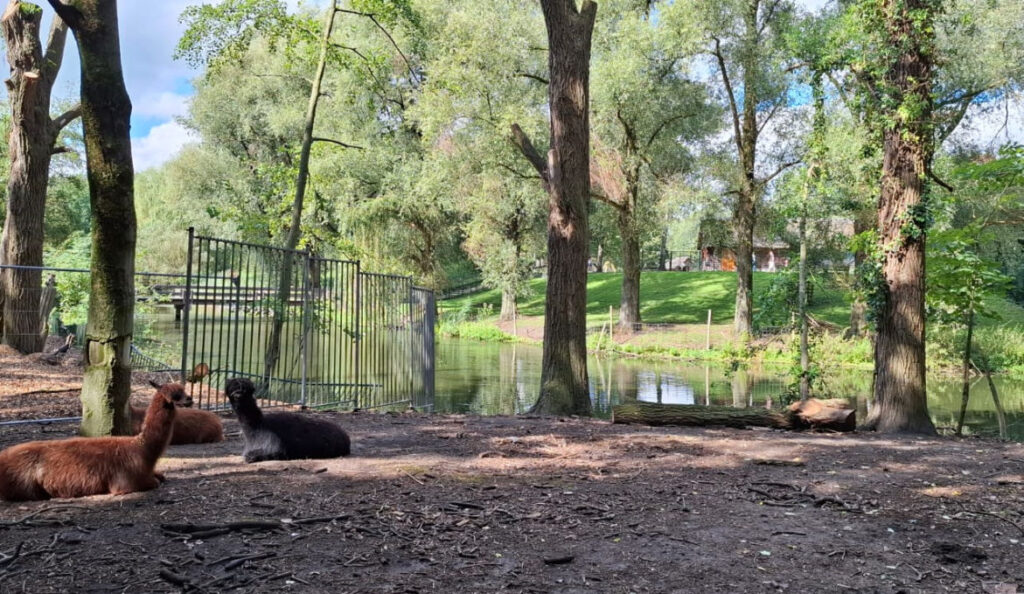
Amstel Park is significant, and there is a little bit of everything to see: a mini zoo, a little train that goes around the park, and a cafe that sells the typical Dutch Pannekoeken.
If lucky, you might come across an event with live music and food trucks serving local delights.
Love exploring Amsterdam? Check out my guide to the Best Walks Along the Canals for more scenic routes!
6. De Riekermolen Windmill and Rembrandt Statue
This walk along the Amstel is quiet, but you will encounter some crowds here.
Take a walk and visit the surroundings; enjoy the views of the beautiful mill that dates back to 1636 and the statue of the famous Dutch painter Rembrandt van Rijn, who used to sketch in the Amstel area.
7. Six’s Bridge
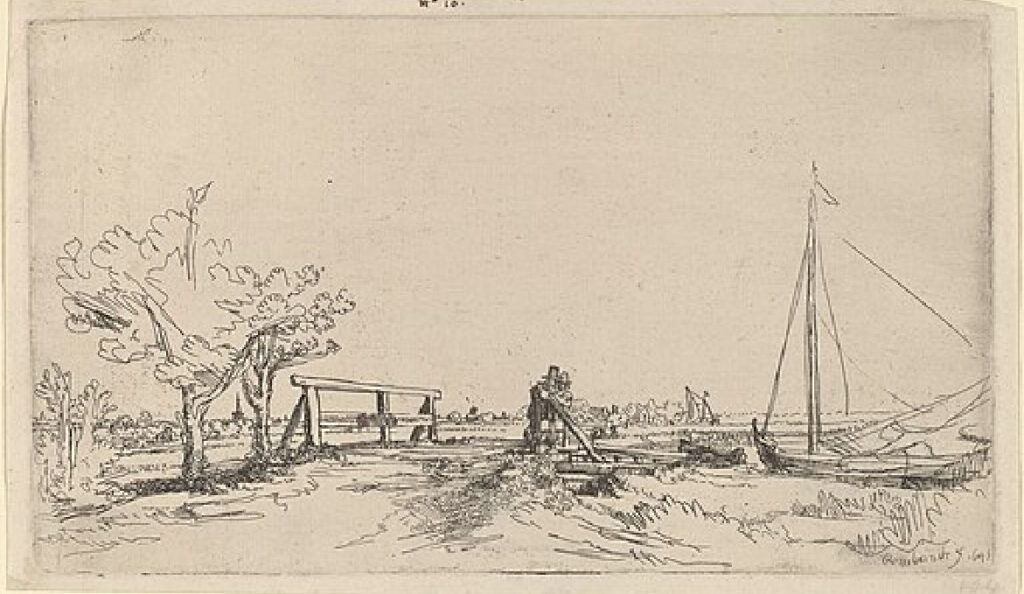
Rembrandt often left Amsterdam from his house in Sint Antoniesbreestraat (now Jodenbreestraat) to explore the polder landscape and capture everyday scenes along the Amstel River.
According to the Rijksmuseum, his famous etching “Six’s Bridge” was drawn near Jan Six’s country house while waiting for a servant to fetch mustard.
This anecdote highlights Rembrandt’s spontaneity, suggesting he worked quickly and carried prepared copper plates for etching.
8. Wester Amstel Country House
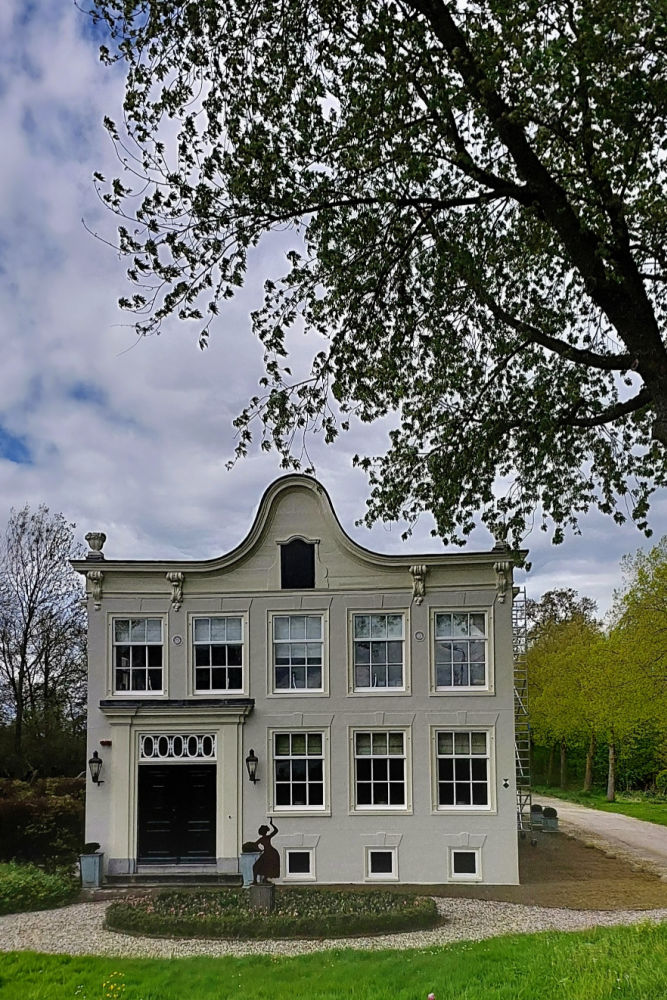
This serene country house, built in 1662, is nestled along the tranquil banks of the Amstel River at the last bend before Ouderkerk. It has exquisitely maintained gardens.
They offer an audio tour to Learn about the estate’s connection to the Dutch Golden Age and its evolution.
There are some benches and picnic spots around the park where you can relax and take a break.
9. Buitenplaats Oostermeer
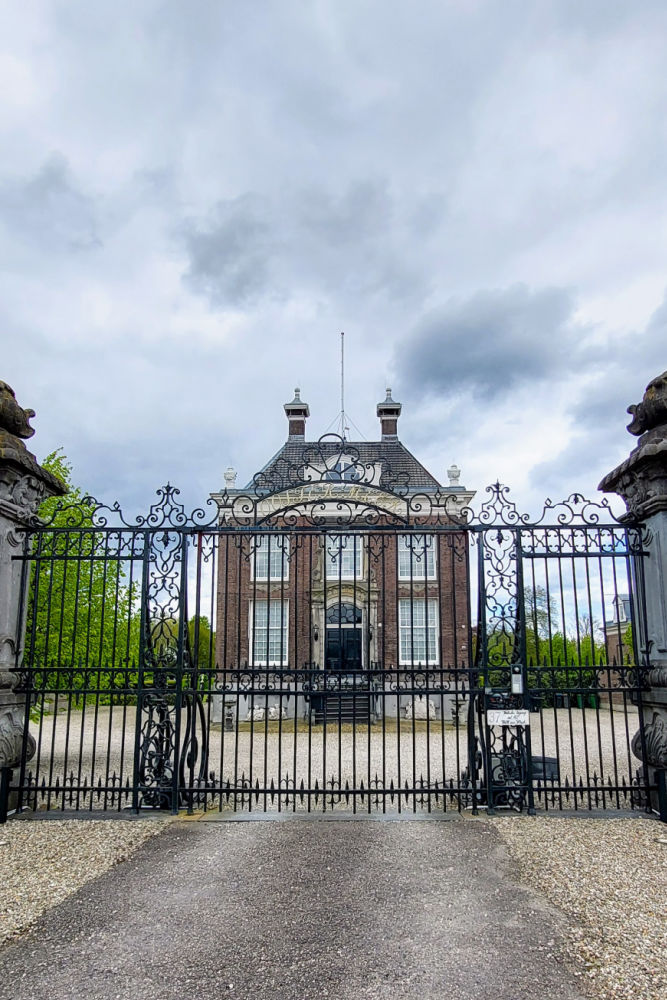
This beautiful property was a summer residence for wealthy city dwellers in the Netherlands.
During the Dutch Golden Age in the 17th century, prosperous merchants and city officials amassed great wealth.
Initially, they purchased country estates primarily for rental income, but these properties radically transformed over time.
Grand mansions, fit for the affluent, were constructed. These estates evolved into lavish summer residences where the wealthy would escape city life during the warmer months.
10. Crossing the bridge
At a certain point, you will reach a bridge that connects both sides of the Amstel river; this bridge is just before the charming town of Oude kerk aan de Amstel.
Cross the bridge to the other side of the river to continue the walk.
You will pass along a few houses complex until you reach the border of the river again.
Continue along the river until you reach the following destination: Windmill the Swan.
11. Windmill The Swan

Windmill the Swan is a hidden gem in the Dutch countryside—a windmill completed in 2020.
If you are lucky, you will meet the volunteers bustling about, keeping this slice of heritage alive and eagerly sharing tales of the mill’s history.
Settle in for a bite or a coffee, surrounded by the mill’s rustic beauty, especially if you have good weather!
If you enjoy riverside hikes, don’t miss my Hiking in the Forest in Nijmegen guide for another beautiful trail!
13. Nature Garden Park Amstelglorie

Picture a set of gardens with tiny houses, a unique concept in the Netherlands.
Here, you can buy or rent a garden outside the city, complete with these charming tiny houses, mostly made of wood.
The residents of Amsterdam enjoy the benefits of growing their vegetables and fruits and being near nature.
The atmosphere is peaceful, and you can even treat yourself to an ice cream or a drink from the small restaurant at the entrance.
The garden’s occupants are always friendly and ready to greet you as you pass by.
14. Cafe thuis aan de Amstel
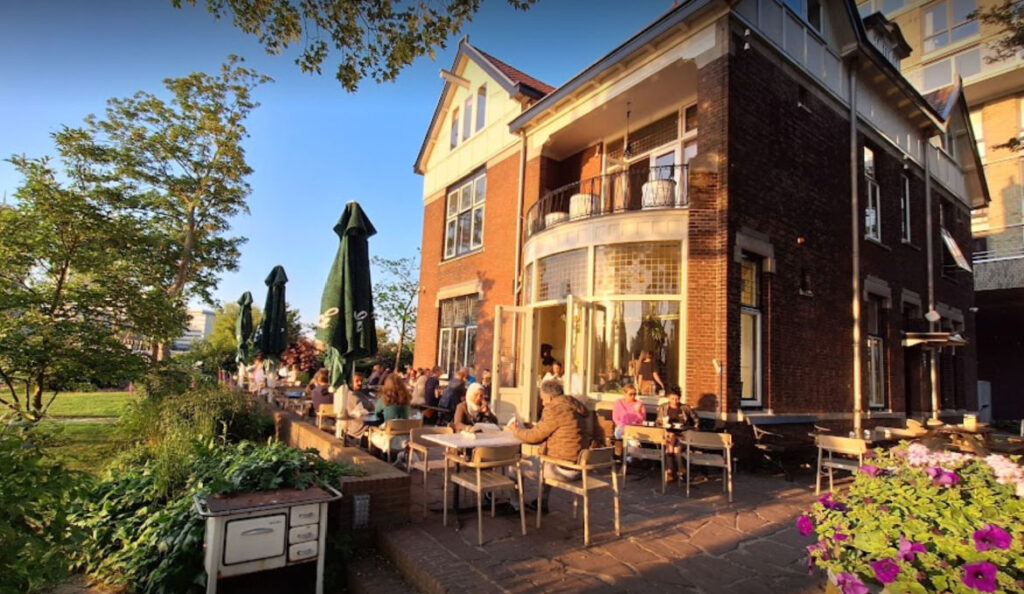
After a long walk, you are ready for a tasteful meal and warm coffee!
Thuis aan de Amstel is in an old engineer’s house built between 1907 and 1913.
As soon as we entered, I was immersed in a relaxed, artistic atmosphere surrounded by Dutch-styled wooden furniture typical of Cafes.
The cakes and desserts were displayed behind a display case, and the girl who worked there was not just amiable but also made us feel genuinely welcomed.
The vegan burger and the delicious oat milk coffee were perfect and delicious!
The End of the Amstel River Hike in Amsterdam
The walk ends in Hermitage, where we started, but you can also take the metro at Spaklerweg, a few minutes from Café Thuis aan de Amstel.
Final thoughts
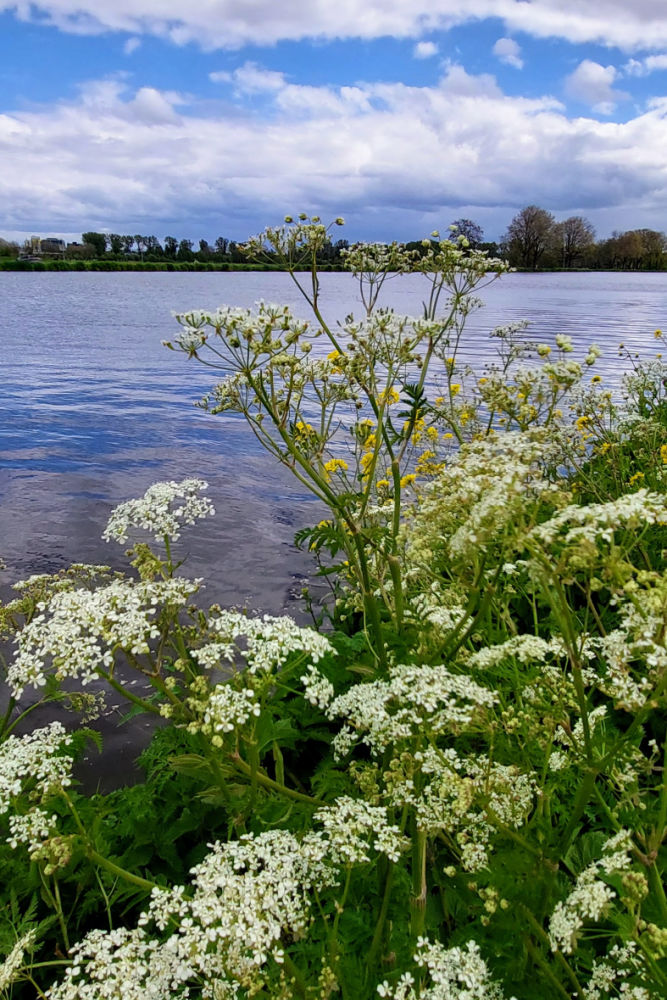
It’s inspiring to leave the city and find nature and history just a stone’s throw away.
I recommend this walk to anyone who wants to see beyond Amsterdam’s canals and museums.
And for art enthusiasts, visiting the places where Rembrandt was inspired to paint is an absolute thrill.

One of the most captivating sights along the way was the charming Houseboats.
Some of them, like the one in the photo with a car parked on its roof, starkly contrast the past and the more alternative and creative side of Amsterdam culture.
This walk is part of our Best Amsterdam Walking Routes
Pin this post


